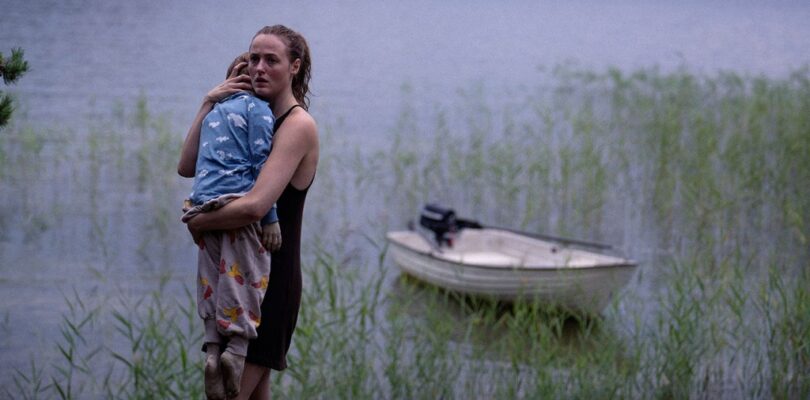Perhaps the best way to describe the Norwegian zombie movie, Handling the Undead (Handtering av Udode), is as a mournful reflection on grief, on the struggle of the bereaved to let go of their departed loved ones. Based on the book by Swedish author John Ajvide Lindqvist, whose debut novel, Let the Right One In, became one of the best vampire movies of the 21st century — yielding a solid enough American remake, a so-so Showtime series and an innovative British stage adaptation — Thea Hvistendahl’s debut feature is a slow-burn experience that demands patience.
The degree to which that patience is rewarded will depend on the viewer’s willingness to get lost in the mood of pervasive anxiety and sorrow in a movie whose elegant restraint make it more psychological study than horror. That applies even once the rotting flesh-eaters have been revealed. One selling point of the multistrand drama for Neon will be the prominence in the ensemble of Renate Reinsve and Anders Danielsen Lie, so unforgettable together in The Worst Person in the World.
Handling the Undead
The Bottom Line
An unexpectedly poignant lament.
Venue: Sundance Film Festival (World Cinema Dramatic Competition)
Cast: Renate Reinsve, Bjorn Sundquist, Bente Borsum, Anders Danielsen Lie, Bahar Pars, Inesa Dauksta, Kian Hansen
Director: Thea Hvistendahl
Screenwriters: John Ajvide Lindqvist, Thea Hvistendahl, based on Lindqvist’s novel
1 hour 39 minutes
The movie’s most horrific element is less the ambulatory corpses than a hard-to-watch act of animal cruelty, comparable to the distressing cat scene in another Nordic chiller, Eskil Vogt’s The Innocents, from 2021. What is it with the Scandis and their urge to traumatize us with pet-ricide? Consider this a trigger warning.
On a random summer day in Oslo, the recently deceased are reanimated, an unexplained event marked by flocks of panicked birds, power outages, traffic lights on the fritz and car alarms spontaneously going off. While the phenomenon appears at the very least to be citywide, the screenplay by Lindqvist and Hvistendahl confines its attention to three unrelated families directly affected.
Following the death of her young son, Anna (Reinsve) has retreated into stony silence, refusing to eat the meals delivered to her apartment by her equally stricken father (Bjorn Sundquist), to whom she barely speaks. Eva (Bahar Pars) is driving when the event takes place, with ear-piercing interference on the car radio serving as a prelude to the news that she’s been in an accident. Her husband David (Lie) and their children Flora (Inesa Dauksta) and Kian (Kian Hansen) learn she was pronounced dead but regained consciousness on the operating table and remains in hospital under observation. A well-heeled elderly lesbian (Bente Borsum) returns home from the funeral of her beloved partner (Olga Damani) and is startled not long after to find the dead woman sitting in their kitchen.
Each of the three strands is approached for pathos, not shock. Borsum’s character tenderly bathes and applies makeup to her companion, now mute and with an absent look in her eyes. The choice of Nina Simone singing “Ne Me Quitte Pas” might be a little obvious for their romantic dance, but that doesn’t make it less touching.
David does his best to hide his anguish from the kids, celebrating preteen Kian’s birthday with a cake and the gift of a bunny, as if everything will proceed as normal. But a family hospital visit leaves all three of them badly shaken, unsure of who or what Eva has become.
The principal focus eventually becomes Anna and her father, who digs up the grave of his grandson, Elias, whispering, “Grandpa is coming.” The boy has been in the ground long enough to start decomposing; his hollow eyes and twisted mouth as he tries to form words that come out only as whimpers make him a sight both disturbing and moving. (The makeup and prosthetics are excellent.)
When Anna comes home from work and sees her lost child sleeping, her confusion gives way almost instantly to protective warmth, erasing the numbness that previously defined her. A knock at the door from the police causes them to flee to an isolated woodlands cabin, but they don’t remain safe for long, causing Anna to make a heartbreaking decision.
Hvistendahl shows great control, maintaining a solemn tone, matched by the detached observational style of DP Pal Ulvik Rokseth’s camera, favoring medium or long shots. The movie’s stillness and the sparseness of its dialogue make the sparingly used jolts of startling violence effective. There’s economy also in the way Peter Raeburn’s score is employed, building major dramatic intensity only in the wrenching final act.
Reflecting on the thin line between life and death, Handling the Undead is a strange film that risks falling between the cracks of horror and psychological drama, with a subtlety that might limit its audience. But the strong cast and distinctive approach to a widely trafficked subgenre make it a soulful rumination on loss.




